Last Chance to Catch NYC's Holiday Notalgia Train
We met the voices of the NYC subway on our nostalgia ride this weekend!


As part of a city-wide initiative focused on reducing the stigma that surrounds mental illness, the New York City Health Department and the Fund for Public Health has recently launched the Mural Arts Project, an initiative that focuses on the creation of large-scale street art murals. This May, three new murals were created by the local community where the works will be installed— two of which will be located in the Bronx, and one in Hell’s Kitchen. The mural in Manhattan was created by the Fountain House Gallery and artist Andrew Frank Baer. Those in the Bronx were created in collaboration with VIP Community Services and the artist Tova Snyder.
The prevalence of mental illness in New York City has become increasingly apparent, especially since a 2015 study by the Department of Health found that 1 in 5 New Yorkers suffer from some kind of mental illness, and 8% or more suffer from depression. The study also found that only 40% of people with depression are receiving treatment.
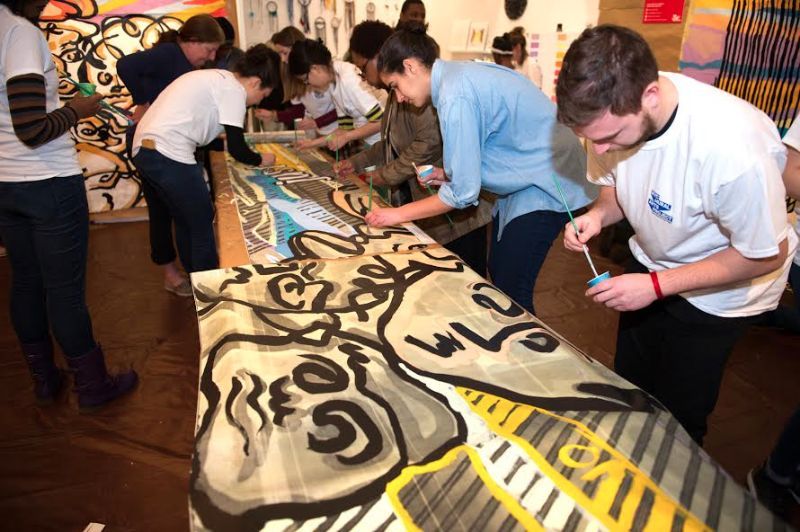
Participants work on a mural at Fountain House Gallery. Image courtesy New York City Health Department.
In addition, the study found that depression is more common among impoverished communities; 90% of children ages 2-5 who meet the criteria for one of the five major mental illnesses live under the poverty line. Furthermore, the medical costs for those who suffer from mental illness are significantly higher than for those who do not. All this, combined with inadequate treatment methods and an influx in the distribution of under-the-counter medication, leads to a domino effect of circumstances that prevent those suffering from mental illness from receiving the care that they need.
The Mural Arts Project attempts to address this problem through the integration of art and community-wide collaboration. The program works like this: a muralist is matched with groups of people at a mental health community organization, and together they brainstorm a design over a series of weekly meetings. The muralist then presents the design to the community for feedback, and everyone gets together to paint the mural.
The project borrows inspiration from Philadelphia Mural Project, which has facilitated the creation of murals through communication between artists and communities for over 30 years. The mural-making process is designed to create learning opportunities that expose many different demographics to the healing power inherent in art-making and collaboration. Mural-making itself is part of a tradition that traces all the way back to the very first cave paintings, and that continues to be an influential form of expression all over the world.
In the Bronx, one of the murals was created in collaboration with the organization VIP Health Services, which provides support for individuals struggling with substance abuse, addiction, and other health concerns. VIP has hosted weekly brainstorming workshops with the artist Tova Snyder since November 2016, and Snyder designed her mural based on the ideas that originated in these workshops.
The other mural in Hell’s Kitchen was created in collaboration with an organization called the Fountain House Gallery, a venue that supports artists with mental illness.
Carmen Rivera, the program organizer who facilitated the Mural Arts Project’s collaboration with VIP, said that while observing the meetings, she watched “the artist [taught the participants] the concept of art, the beauty of art, the freedom of art, the freedom of expression,” adding that the art-making process “was almost like a tranquilizer… they were very calm and very engaged with what they were doing.”Art therapy has been proven many times over to be an effective form of treatment for all kinds of illnesses, and so while the mural-making process is aimed at facilitating larger community interaction, some of the healing can definitely take place in the act of art-making and creation itself.
Photos of some of the final products are shown below.
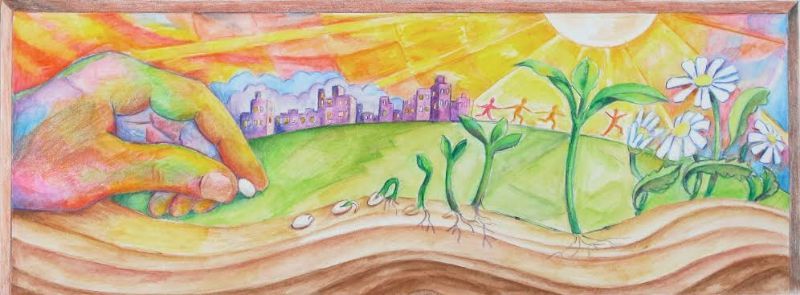
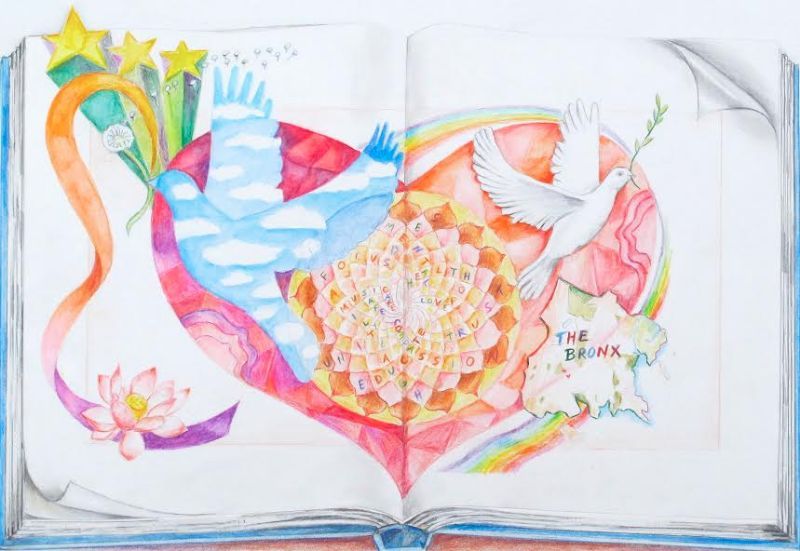
A design inspired by art workshops held at Fountain House Gallery. Image courtesy New York City Health Department
The project is designed to effect both large and small-scale change. Ms. Rivera added that during a board meeting at the secondary school C.S.211, where one of the murals has been placed, a parent in the audience stood up and said that she herself suffered from mental illness, and was grateful to the mural project for giving her the courage to speak out about it.
The woman at the helm of the workshops, Tova Snyder, is a professional muralist who also frequently teaches art in mental health facilities. She stated that during the workshops, “instead of [talking about] medications and doctors, [the participants started] talking about art, and then once you start talking about art, it’s endless.” She added that art creates a “whole world where you have space to experiment,” and that the process “[took the participants’] minds off negative thoughts.”
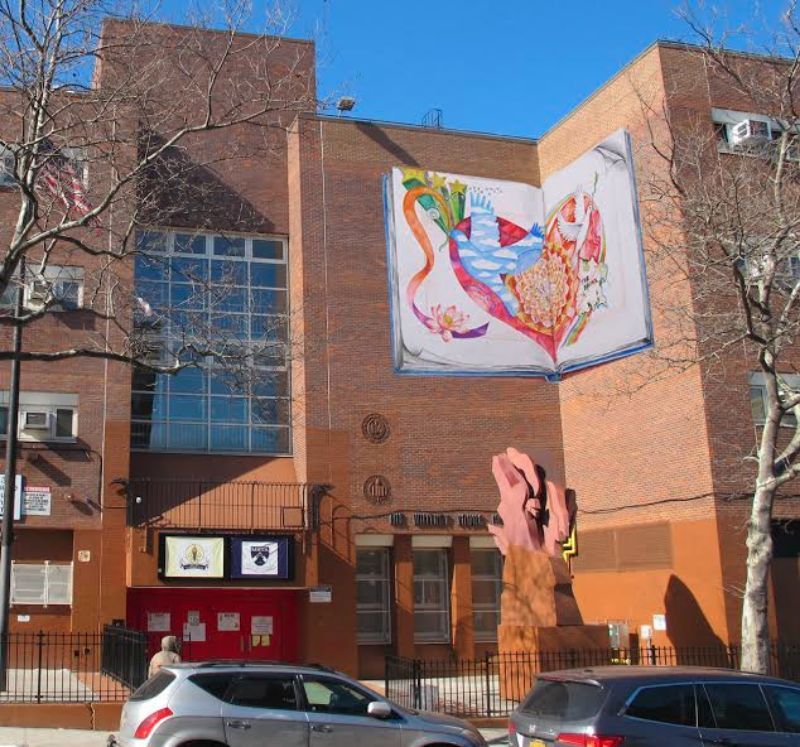
Rendering of the work to be located at C.S. 211 in East Tremont. Image courtesy New York City Health Department
During the meetings, Ms. Snyder spoke to the participants about their thoughts and feelings, and taught workshops about painting, meditation, and more. She then transformed her observations into a mural based on the idea that “mental illness has many faces.” One of the final mural designs, seen below, displays the faces of the many different kinds of people who can suffer from mental illness. Some of the more famous figures are Nina Simone and Vincent Van Gogh, who both had bipolar disorder, and Abraham Lincoln, who suffered from depression.
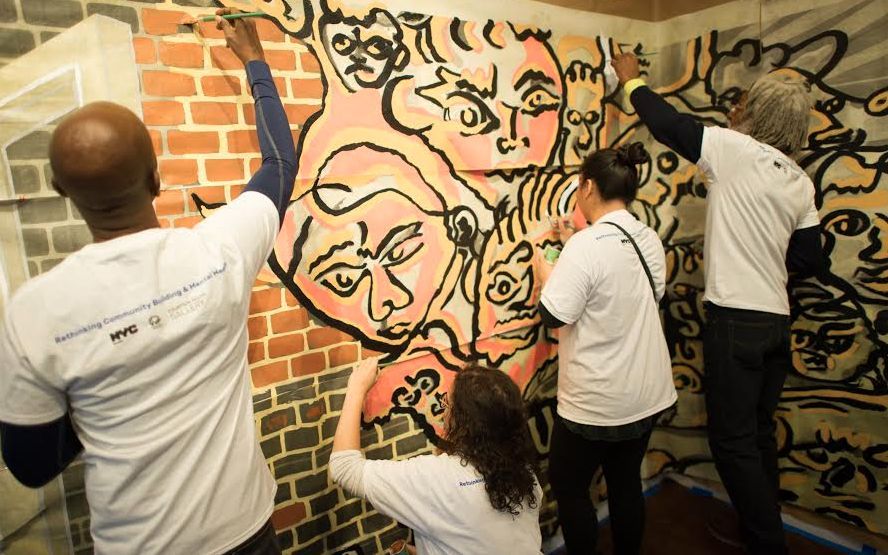
Participants color in a design at a community paint day. Image courtesy New York City Health Department
Another idea that came from these brainstorming sessions was the statement “I like you the way you are.” The mural inspired by this idea, seen at the top of the article, displays these words in large text. “A lot of people living with mental health concerns on the road to recovery feel stigmatized and excluded, and this mural is really about acceptance,” said Ms. Snyder of the project.
After the designs were reviewed, revised, and finished, the process culminated in two community-wide painting days, which took place on Saturday, May 6th and Saturday, May 13th.
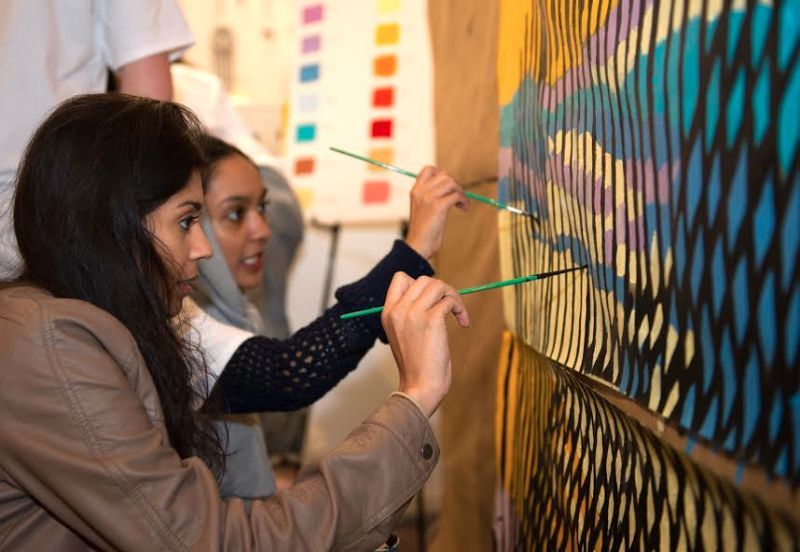
Image courtesy New York City Health Department
According to Dr. Myla Harrison, Assistant Commissioner and Medical Director for Mental Health at the New York City Health Department, the project’s participants “were able to learn self-expression, find a creative outlet, and build ties and social networks amongst the group members.” She added that “their experiences are unique, but they also have a lot in common with one another.”
The purpose of the project was to facilitate community-wide conversations and support networks, and to reduce the stigma that surrounds mental illness. According to its website, the Mural Arts Project is committed to “[recognizing] that a person’s mental health cannot depend solely on medical care, but is strengthened through communal support and open dialogue with family, friends, and neighbors.” Though mental illness can feel debilitating, being a part of a community and having an outlet for expression can greatly ease the pain, and having proper treatment can be immensely healing – but these things will only be possible if mental illness is talked about and supported on a much larger scale than it currently is.
“We know stigma – both self-stigma, or judging oneself, and the stigma one experiences from the outside world – can can contribute to poor outcomes for people with mental health concerns,” said Dr. Harrison, adding that “it is our hope the mental health consumers will leave the project feeling connected to this work.” The long-term goal is to reduce stigma so that people feel comfortable enough to talk and learn about mental illness, and so they are able to seek proper treatment when they need it.
Support for the project has been expressed by city-funded initiative ThriveNYC and First Lady Charlene McCray, who expressed her support for the Mural Arts Project, stating that “the Mural Arts Project is an important investment” and “art has the ability to profoundly change the way we think, feel, and even spark meaningful conversation to begin to break down the strongholds of isolation and stigma.”
By bringing people together and creating something real out of the stories and thoughts of people living with mental illness, the Mural Arts Project has already facilitated important communication, amplifying voices that otherwise might have remained silent.
Next, check out 12 outdoor art installations not to miss in NYC this month.
Subscribe to our newsletter